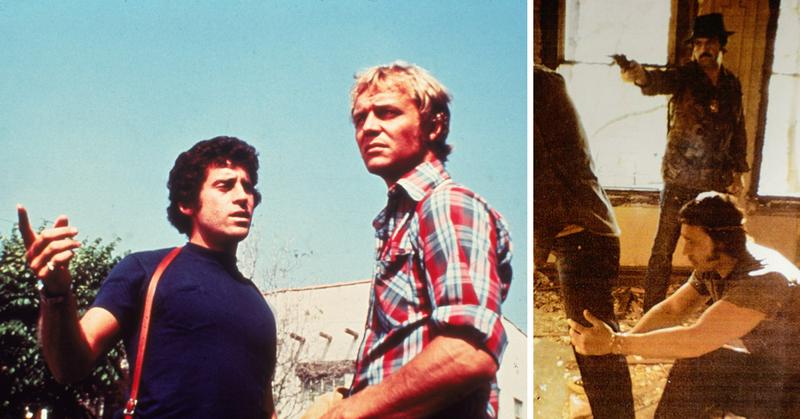Starsky & Hutch Were Based On These Two Awesome Cops
By | August 27, 2019

The TV cops Starsky and Hutch, played by Paul Michael Glaser and David Soul from 1975-79, were best friends, with a professional relationship that was more like a brotherly bond. It was a different kind of cop show, and the characters were based on a pair of Brooklyn policemen who took a unique approach to fight crime. The exploits of Lou Telano, now a radio host, and his late partner John Sepe served as the inspiration for Starsky & Hutch -- well, at least according to Lou Telano.
Stranger Than Fiction

In the ‘60s and ‘70s, crime in the Big Apple was spreading like wildfire. Murders rose from 1,185 in 1968 to 2,100 in 1979 and two officers decided they needed to get creative in order to stem the tide of crime. For John Sepe, A.K.A “The Lone Ranger” and Lou Telano who was naturally nicknamed “Tonto,” ordinary police methods weren’t getting the job done.
The Finer The Bait The Shorter The Wait

In order to more effectively catch criminals, the original Telano and Sepe employed “decoy work.” “Decoy work” entailed our Lone Ranger and Tonto to dress up as potential victims in order to draw our potential crooks. As Telano tells it, they enjoyed getting into character, “We had fun with the different costumes. We weren't the first cops to do undercover work, but we definitely paved the way."
No Bridge Too Far

For these two crime fighters, everything was on the table. Once, the duo was investigating a series of robberies in Williamsburg. To get in character, they enlisted a rabbi to help dress them as Hasidic Jews, then the pair of lawmen spent some time shambling around Williamsburg to attract attention. When a group of youths later tried to mug the two Hasidic Jews, they were stunned to find Sepe and Telano undercover.
Beauty Without Grace Is The Hook Without The Bait

When Telano and Sepe learned thieves were menacing gay couples in Coney Island, the partners went undercover by posing as gay lovers. They ambled along the boardwalk hand in hand, wearing tight jeans and muscle shirts. Unfortunately, their cover was blown when a woman recognized Sepe.
Despite the beans getting spilled, Telano found the scenario hilarious, “It was hysterical. John is trying to hide from this woman, but she was screaming 'I went to school with him!” Apparently, the Lone Ranger didn’t find it as funny, “You always talk me into these things!" said Sepe, according to Telano. However, that wasn’t the case. Telano fondly remembers their teamwork, "We always collaborated on the costumes."
Showing Some Leg

On another case, Sepe and Telano dressed as women in order to catch hoodlums who were holding up nurses after their shifts. They sourced the clothing from family members, unwilling to procure them on their own. “We got the women's clothing from family," Telano told the Daily News. "We were too embarrassed to go into a store and try on women's clothes, which you could do today. You couldn't do it back then."
But Were These Guys Really The Inspiration For The Show?

Sepe and Telano were the inspiration for Starsky & Hutch -- that's Telano's story, at least. But there was a higher-profile real-life cop duo in the mid-'70s: David Greenberg and Robert Hantz. In the 1973 book The Super Cops: The True Story of the Cops Called Batman and Robin, author L. H. Whittemore had told tales of the exploits of Greenberg and Hantz. The book was a hit and spawned a comic book and a 1974 movie adaptation directed by Gordon Parks. Both IMDB and Wikipedia cite The Super Cops as the model for Starsky and Hutch. While Telano's tales are entertaining, it seems more likely that Starsky and Hutch would have been adapted from the Super Cops phenomenon. But we may never know.
True Crime Fighters

Nothing could stop these real-life inspirations of Starsky and Hutch from foiling criminals. Whether it was dressed as garbage men or hippies, these two undercover cops brought swift surprise and sweet justice to lawbreakers all over Brooklyn. According to Eugene O’Donnell, a professor of police studies at John Jay College of Criminal Justice, Sepe and Telano took matters into their own hands when higher-ups at the NYPD became too concerned with red tape.
"(Sepe and Telano) were emblematic of a time when the police department was perceived by its own cops as unnecessarily bureaucratic," said O'Donnell, a former cop. He went on to say that the NYPD leadership "was totally disengaged from real people problems. When that happened (the cops) took on the job to go after the bad guys themselves."
